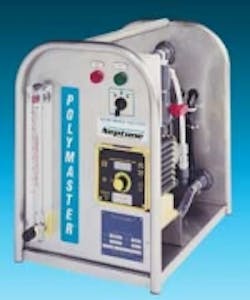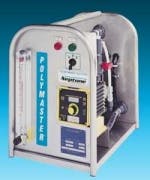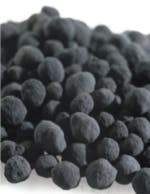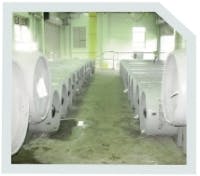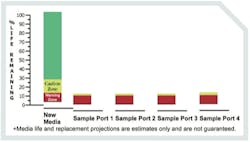Gas scrubber prevents toxic chlorine gas release at wastewater treatment plant
The Problem
Wastewater treatment plants combine four primary steps to process sewage: liquid handling, solid handling, pump stations and plant maintenance. During the liquid handling process, chlorine (Cl2) is used to treat the cleaned wastewater.
Facilities storing large quantities of chlorine, typically in one or more one-ton cylinders, must invest in emergency standby equipment to prevent accidental chemical releases. The U.S. Environmental Protection Agency's (EPA) Risk Management Program for Chemical Accident Release Prevention "requires regulated facilities to develop and implement appropriate risk management programs to minimize the frequency and severity of chemical plant accidents." In addition, "a performance- based approach towards compliance with the risk management program rule is required."
If a toxic gas release from a one-ton cylinder were to occur, the thermodynamic properties of chlorine suggest that approximately 400 lbs of liquid chlorine would flash into vapor and the remaining contents of the cylinder would spill out as a liquid at its boiling point. According to the American Water Works Association (AWWA) Risk Management Program (RMP) Guidance, the outer limit of the impact area, in a chlorine release, is drawn at a five- mile radius in all directions from the point of impact.
Instead of using toxic, liquid caustic to neutralize gases, the EGS uses non-toxic, dry-scrubbing medium. This medium's chemisorptive process removes chlorine by means of adsorption, absorption and chemical reaction. Chlorine gas is trapped within the pellet where an irreversible chemical reaction changes the gases into harmless solids.
This unit and site are prime examples of the benefits of an EGS with dry-scrubbing media. The dry-scrubbing medium within the unit is non-toxic, non-hazardous, maintenance-free, UL Classified, and most importantly, it can effectively help to save the priceless elements of a community. Stewart contends, "The biggest thing [the EGS] did for us was turn a [potentially] major chlorine incident into a minor one. We were able to shut the gas off without it escaping to surrounding areas."
For years, Moccasin Bend WWTP's officials have underscored safety. The chlorine room's sensors were installed to measure a leak of 1 part per million (ppm), which will activate an alarm and seal the building to contain the gas. These preventative measures are vital to guard against a worst-case scenario leak. In 2004, Moccasin Bend professionals also conducted the largest regional chlorine drill to enact proper procedures during a simulated leak.
Purafil is proud to have played an integral role in protecting the Moccasin Bend community. The EGS filled with the original Chlorosorb medium remained unchallenged for nearly 10 years. When the leak occurred, it performed as specified without any evidence of medium degradation due to age or environmental conditions. When the "all clear" signal was given and the Chlorosorb in the EGS was removed, all indications were that the unit performed properly and it successfully withstood the toxic exposure. Moccasin Bend WWTP recently ordered 23,000 pounds of new Chlorosorb Ultra media, which has a minimum removal capacity of 15% by weight.
About the site
The Tennessee River and Cumberland Escarpment intersect to form the historical Moccasin Bend in Chattanooga. The 925-acre area's significant development and relevance for its original Native American inhabitants span more than 10,000 years. In fact, residents and historians, alike, have lobbied to preserve Moccasin Bend for more than 20 years. In turn, the plush grounds nestled within the Chickamauga and Chattanooga National Military parks have also been deemed an Archaeological District among the National Register of Historic Places, a National Historic Landmark and a Native American Burial Ground.
According to The Friends of Moccasin Bend National Park, a nonprofit organization, the area represents the historical Native essence of Chattanooga. Its place in history, which predates the Common Era, has been chronicled with life and its necessity for potable water.
Subsequently, the wastewater treatment plant was built in the 1960s and bears the same name. Moccasin WWTP serves 400,000 people, treats 140 million gallons of water per day (MGD) and has a maximum hydraulic capacity of 220 MGD.
About Purafil ESD
Purafil ESD's EGSs are more advantageous than toxic, liquid wet scrubbers. Purafil introduced an easy Retrofit Plan for Liquid Caustic Scrubbers transform wet scrubbers and protect wastewater facilities and their communities from potential risk.
Purafil ESD is the premier single-source manufacturer of clean air products throughout North America and Europe.
A division of Purafil Inc., Purafil ESD manufactures a broad range of dry-chemical media and scrubbers that remove odors, prevent toxic gas releases, and corrosion of electronics. Visit our Web site at www.purafil.com.
November 2009
###
